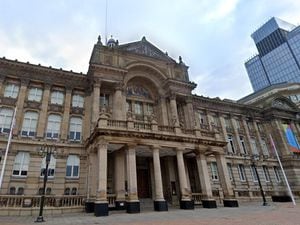Wolverhampton ranked 10th worst in Britain for outdated bridges
A Black Country borough has ranked among the worst in the country for having outdated bridges in need of repairs.

Wolverhampton has been ranked 10th on the list of councils in Britain with the highest proportion of substandard bridges in a report by the RAC Foundation.
According to the research 10 of Wolverhampton's 58 bridges are substandard - or 17 per cent - meaning they were built to earlier design standards or have deteriorated through age and use.
The council said all structures are regularly inspected and that any weight-restricted bridges would soon be inspected with a view to bringing them back to full capacity.
Meanwhile Dudley ranked 46th on the list, with five substandard bridges out of 84 (six per cent) and Staffordshire was 54th with 55 substandard bridges out of 1,080 (five per cent).
In Walsall, which ranked 79th on the list, there were two substandard bridges out of 79 (three per cent) and Sandwell, which ranked 83rd, had three substandard bridges out of 131 (two per cent).
Hammersmith and Fulham topped the list with 50 per cent of its bridges being seen as substandard, with Liverpool, Kingston-Upon-Thames, Brent and Southend-on-Sea completing the top five on the list.
The figures released in the report showed the number of bridges unable to carry the heaviest vehicles on Britain's roads had risen for the second year running, with 3,211 bridges being identified as substandard at the end of last year.
That figure is up 3.4 per cent on the total of 3,105 in 2020, and up 5.1 per cent on the figure of 3,055 in 2019.
The analysis was based on data provided by 196 councils in response to Freedom of Information requests, and was carried out in partnership with Adept, a group representing local authority bosses responsible for transport and other sectors.
RAC Foundation director Steve Gooding said: "Even the failure of the shortest of these structures could mean a 5ft long gap in the carriageway, and even on relatively minor roads that can still be a headache, causing disruption and possibly a long diversion.
"What the data suggests is that councils have been fighting to hold their ground over the last five years.
"Whilst the increase in substandard bridges year-on-year is not huge the picture over the last five years looks more like flatlining than sustained improvement, and with the threat of more severe weather events linked to climate change, that must be a worry for the overall resilience of our highway network."
A spokesman for Wolverhampton Council said: "All structures are inspected at regular intervals in line with national standards and any dangerous defects found during the inspection are repaired.
"The ten weight-restricted structures are located on the city council’s network, three of which are owned by other organisations who have no obligation to increase the strength of the bridge for highway purposes.
"One structure in Wednesfield Town Centre has been returned to full capacity.
"The other structures are not located on the strategic highway network and do not have a major impact on traffic flowing in the city.
"The council is currently reviewing all weight-restricted bridges in the city and will be commissioning structural assessments with a view of securing government funding to returning them to full load capacity."





